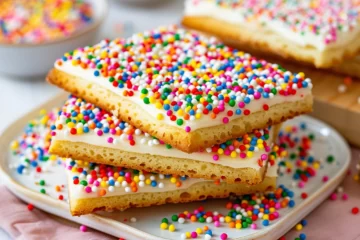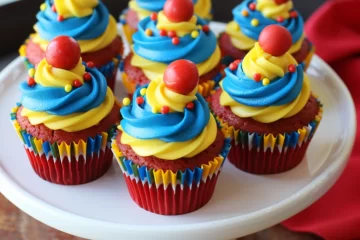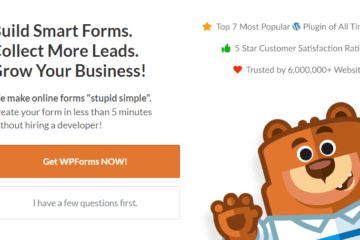Table of Contents
Introduction to the Guide to Making Money from a Food Blog Part One: Why Start a Food Blog?
Welcome to the Guide to Making Money from a Food Blog Part One—a delightful journey where passion for food meets the art of storytelling! Whether you’re a home cook eager to share your cherished family recipes, a city explorer on the hunt for the best street food, or a seasoned chef ready to unveil professional tips, starting a food blog can open up many opportunities.
1. Share Your Unique Culinary Perspective: Everyone has a unique cooking and dining twist. Your food blog is a personal stage where you can express your culinary style, preferences, and innovations. It’s about putting your stamp on the dishes you create and the experiences you share.
2. Connect with Like-Minded Food Enthusiasts: Food blogging isn’t just about posting recipes; it’s about weaving a tapestry of connections with people who share your enthusiasm. Through your blog, you’ll meet fellow food lovers from around the globe, exchange ideas, and inspire each other, enriching your culinary world.
3. Document Your Culinary Journey: Consider your food blog a dynamic, evolving culinary diary. From humble beginnings to complex creations, every post can capture a moment in your culinary life, helping you track your growth as a chef and writer.
4. Unlock the Doors to Culinary Creativity: Blogging pushes you to explore new culinary territories, experiment with ingredients, and refine your cooking techniques. It’s an ongoing challenge that keeps your creative juices flowing, often leading to unexpected, delightful results.
5. Build a Personal Brand: A blog is a powerful tool to build your brand if you dream of making a mark in the food industry. As you grow your audience, your blog can open doors to cookbook deals, food writing assignments, speaking engagements, and even partnerships with food brands.
6. Generate Income: For many, a food blog starts as a hobby and grows into a source of income. Your food blog can become a profitable venture through advertising, sponsored posts, affiliate marketing, and selling your own products.

In essence, starting a food blog is about more than just food. It’s about passion, creativity, community, and opportunity. So, if you’re ready to embark on this flavorful adventure, sharpen your knives, prep your pantry, and let’s dive into the exciting world of food blogging together!
Finding Your Niche in the Food World
As you embark on your food blogging journey, one of the first and most crucial steps is identifying your niche. This unique corner of the food universe will define your blog’s identity and help you stand out in a bustling sea of food enthusiasts. Here’s how to carve out your unique place in the food blogging community:
1. Reflect on Your Passions and Expertise: What types of foods are you most passionate about? Are you all about vegan meals or perhaps the complexities of regional cuisines? Consider your culinary strengths and what you enjoy cooking or exploring the most. Your niche should reflect something you’re excited about—this passion will resonate through your posts and attract readers.
2. Consider Your Unique Experiences: Maybe you’ve traveled extensively and want to share international flavors or have a knack for revamping classic dishes with a modern twist. Use your unique experiences to shape your blog’s focus. This personal touch can make your content stand out and attract an audience seeking your insight.
3. Research Potential Audiences: Who are you writing for? Are you writing for young professionals looking for quick and easy recipes or foodies interested in gourmet dining experiences? Understanding your target audience is critical to tailoring your content to their preferences and needs.
4. Check Out the Competition: Browse other food blogs to see what others are doing. This can inspire you and also show you gaps in the market. Is there an underserved area? Perhaps there’s a rising trend in the culinary world that hasn’t been fully explored. Positioning your blog in a less crowded niche can help you gain traction quickly.
5. Test Your Ideas: Before settling on your niche, write a few blog posts or share your ideas on social media to see what resonates with people. Feedback from potential readers can be invaluable in refining your focus.
6. Stay Flexible: As you grow in your blogging journey, your interests and your audience’s interests might evolve. It’s okay to adjust your focus or expand your niche as you discover more about what drives engagement and fulfills you creatively.

Finding your niche is like choosing the right ingredients for a recipe—it requires thought, experimentation, and a sprinkle of intuition. Once you’ve found your specialty, you can start building a loyal audience that looks forward to every post you write!
Setting Up Your Food Blog: A Step-by-Step Guide
Now that you’ve carved out your niche, it’s time to set the stage—your blog! Setting up your blog might seem daunting initially, but with the proper steps, you’ll find it both manageable and enjoyable. Let’s walk through the essential steps to get your food blog up and running:
1. Choose a Blogging Platform: There are several great platforms, such as WordPress, Blogger, and Squarespace. Each platform has its own pros and cons, so consider your technical comfort level and what functionalities you’ll need. WordPress, for example, is highly customizable and great for those who want more control over their site’s design and features.
2. Pick a Domain Name: Your domain name is your blog’s identity on the web, so choose something catchy, easy to remember, and relevant to your niche. Once you’ve thought of a name, check if it’s available. You can purchase your domain through registrars like GoDaddy or most blogging platforms.
3. Select a Web Hosting Service: If you’re using a self-hosted platform like WordPress.org, you’ll need a web hosting service. Look for reliable web hosting providers with solid customer support, such as Bluehost or SiteGround. They often offer domain registration as part of their hosting packages, which can simplify the process.
4. Design Your Blog: Make your blog visually appealing and reflective of your food philosophy. Many platforms offer customizable templates and themes specifically designed for food blogs. Choose one that is visually appealing, mobile-friendly, and easy for your readers to navigate.
5. Set Up Essential Plugins and Tools: Plugins can enhance the functionality of your blog. Consider adding plugins for SEO, social media sharing, and photo galleries. These will help optimize your content for search engines and make it easier for readers to share your delicious posts.
6. Create Essential Pages: Before you start blogging, make sure to create some key pages:
- About Page: Tell your story and explain what readers can expect from your blog.
- Contact Page: Include a way for readers and potential collaborators to reach you.
- Privacy Policy: Important if you’re collecting any data from your visitors (e.g., through comments or subscriptions).
7. Plan Your Content: Plan a few posts in advance before launching. This ensures you have content ready to go and maintain a consistent posting schedule. Consider starting with a welcome post introducing your blog and what you plan to share.
8. Launch Your Blog: Once everything is set up and you have a few posts ready, it’s time to go live! Share your launch on social media, with friends, and with any online communities you’re a part of to start building your audience.

Setting up your blog is just the beginning of your food blogging adventure. With your platform built, you’re ready to start sharing your passion for food with the world. Dive in, start posting, and watch your culinary community grow!
Designing Your Food Blog for Maximum Appeal
Once your food blog is up and running, the next crucial step is ensuring it looks as inviting and appetizing as your recipes. A well-designed blog draws readers in and keeps them coming back for more. Here’s how you can design your food blog to make a great first impression:
1. Choose a Clean, Professional Layout: Opt for a clean and easy-to-navigate layout. A cluttered design can overwhelm your visitors and detract from your content. Ensure readers can easily find your most popular posts, recent recipes, and essential pages like your About and Contact information.
2. Use High-Quality Images: In food blogging, visuals are nearly as important as the recipes. Use high-quality images to showcase your dishes in the best light. Consider investing in a good camera and learning basic food photography and styling techniques to make your photos pop.
3. Optimize for Mobile: Many readers will access your blog from mobile devices, so your design must be responsive. This means it should look good and function well on devices of all sizes, from smartphones to tablets to desktops.
4. Personalize Your Design: Add personal touches that reflect your style and culinary philosophy. This could be a unique logo, a custom color scheme, or hand-drawn elements. These details help distinguish your blog from others and make your brand memorable.
5. Focus on Typography: The right font can make a huge difference in how your blog feels and how your content is readable. Choose fonts that are easy to read and complement your blog’s aesthetic. Generally, it’s good to have one font for headings and another for body text for better visual hierarchy.
6. Implement Easy Navigation: Ensure your menus are straightforward and logical. Include categories or tags that help readers find types of recipes or posts they are interested in, such as “Gluten-Free,” “Quick Meals,” or “Cooking Tips.” A search bar is also necessary so visitors can easily find specific recipes.
7. Engage Visitors with Interactive Elements: Consider adding features like a rating system for your recipes or interactive comments to encourage readers to engage with your content. These interactive elements can increase visitors’ time on your blog and encourage them to participate in your food community.
8. Regularly Update the Design: Just like a physical restaurant might refresh its decor to keep things interesting, periodically updating your blog’s design can re-engage existing readers and attract new ones. Even small changes, like updating your header image seasonally or tweaking your color scheme, can make a big difference.

Creating a beautiful and functional blog design is critical to captivating and retaining visitors. By ensuring that your blog looks appealing and provides a great user experience, you’ll set the stage for your delicious content to shine. Thanks for reading the Guide to Making Money from a Food Blog Part One. Let’s move on to Part Two which will cover the tools and equipment you’ll need to create and capture your culinary masterpieces!
Kitchen Gear and Equipment We Use and Love
I just wanted to let you know that some of the links on this page are affiliate links. This means that if you click on these links and make a purchase, I may earn a small commission at no extra cost to you. Rest assured, I only recommend products and services that I personally use and love. Your support through these links helps me continue to create valuable content and keep this blog running. I appreciate your support!
















